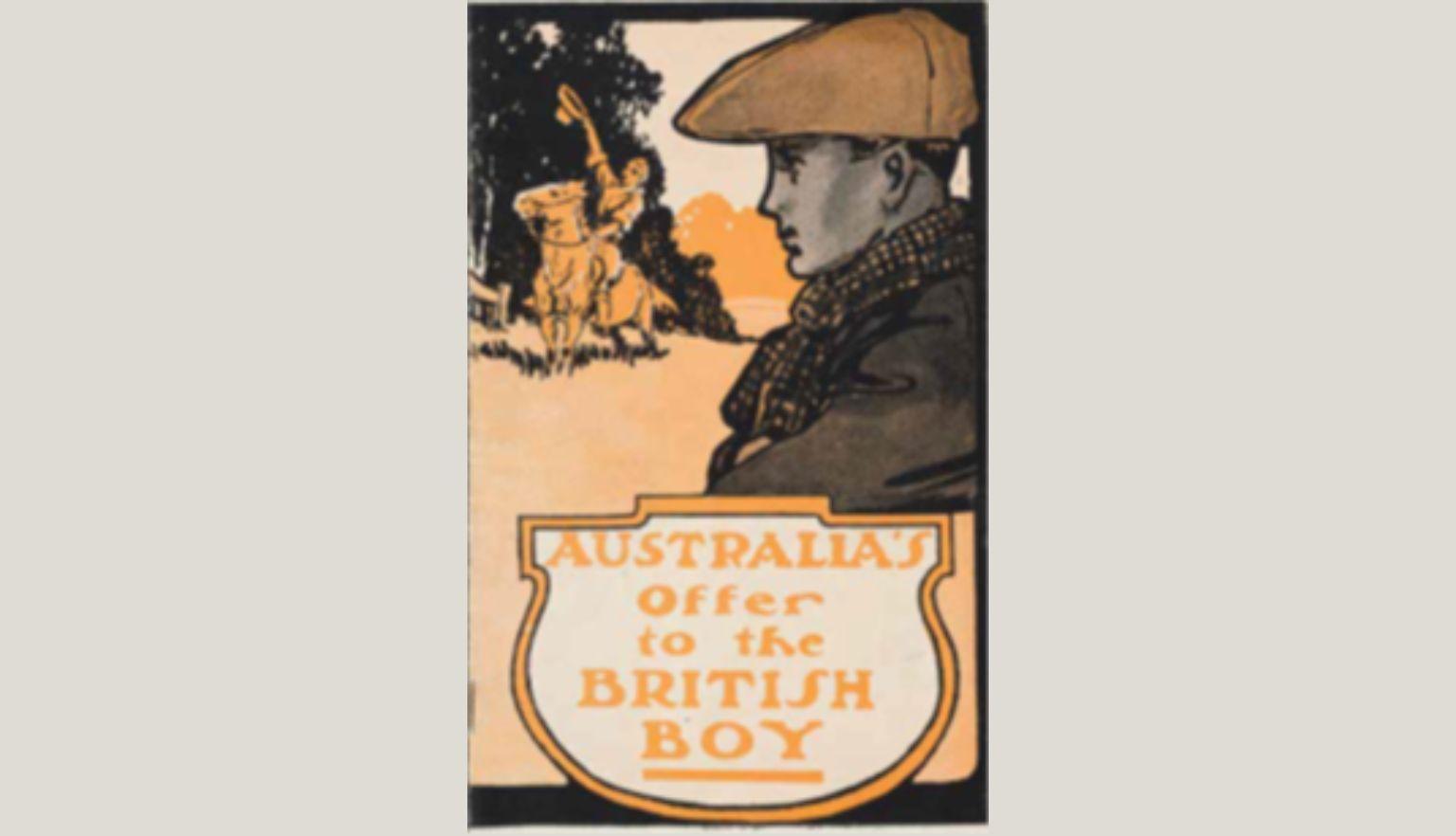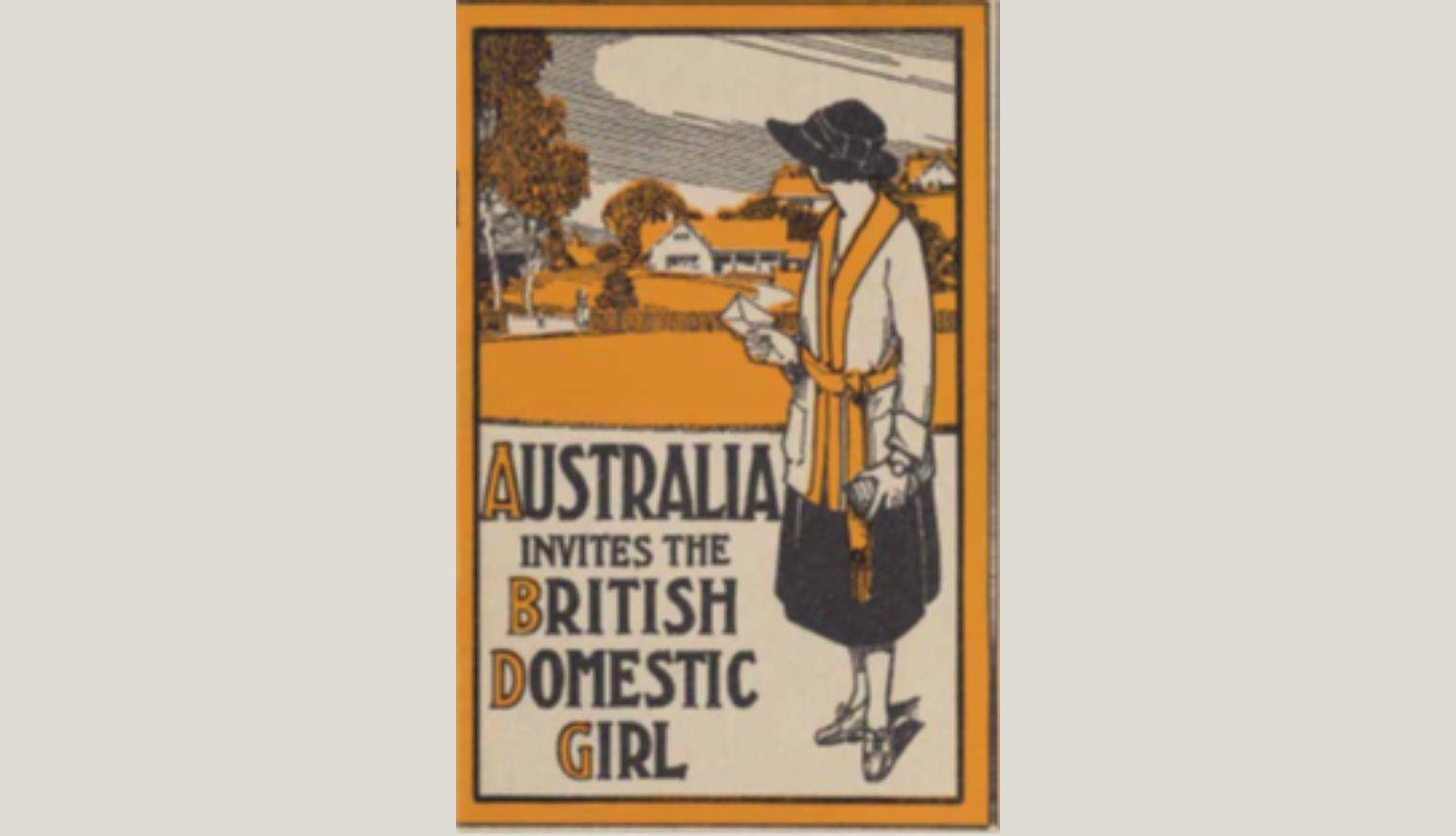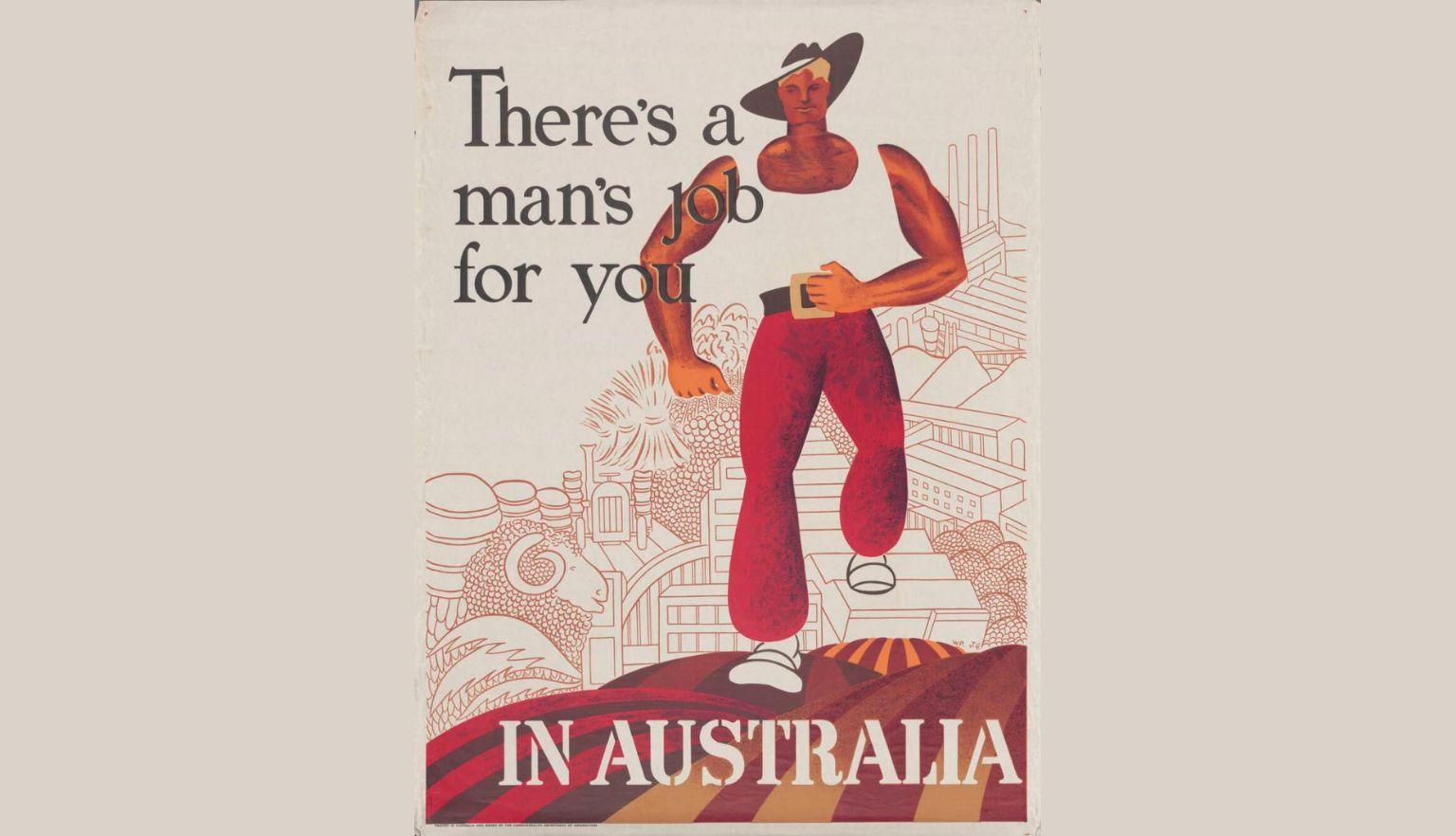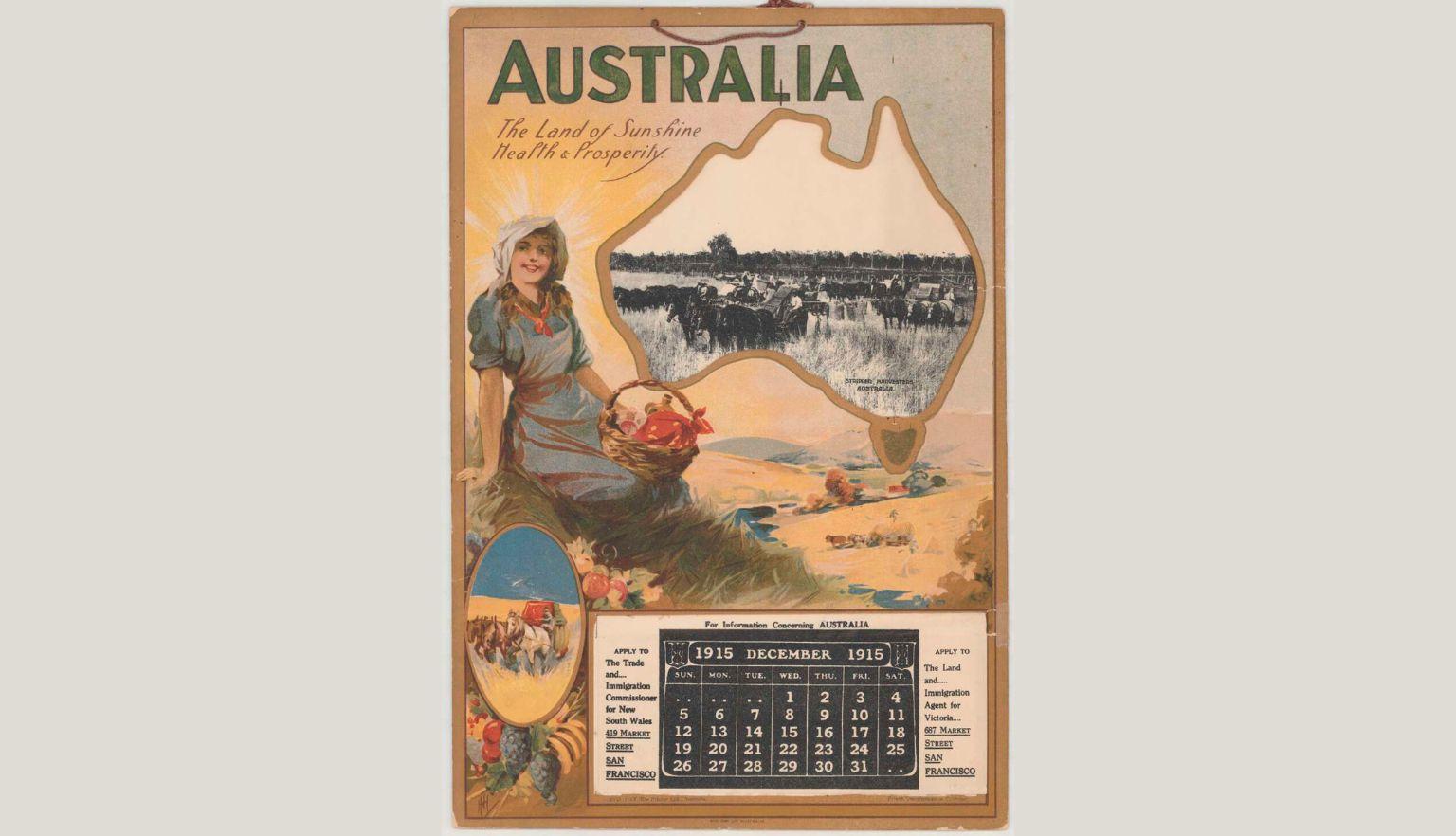Selling the dream
Advertising Australia
After Federation in 1901 competition for British migrants was fierce.
In addition to the Commonwealth’s promotion of migration programs, state governments also ran their own advertising campaigns, promoting the virtues of moving to particular regions in Australia. The imagery used in the advertising material focused on the economic opportunities and healthy lifestyle available for migrants. Australia was often depicted as an agricultural paradise.
Activity 1: Assess the advertising
Before discussing Australian migration after 1901, show the students the collection of posters and brochure covers. You could print them out for the classroom walls. Interrogate the collection with the following questions:
- What are the posters and brochures advertising? Who are they advertising to?
- What do you notice about the language being used in the advertisements?
- What do you notice about the people in the advertisements? What is similar?
Changing immigration policy and laws
Australia's constitution allowed parliament to make laws around ‘immigration and emigration’, ‘influx of criminals’, ‘race’, and ‘naturalisation and aliens’.
In 1901, the Australian Parliament passed 3 Acts that established a ‘White Australia policy’. These were called the Immigration Restriction Act, the Pacific Islander Labourers Act, and the Post and Telegraph Act.
In 1903, parliament also passed the Naturalisation Act which prevented people who were Indigenous to Asia, Africa or the islands of the Pacific from becoming Australian citizens. Indigenous people from New Zealand were an exception to this new law, however.
After the First World War political leaders and journalists argued that Australia needed to increase the rate of British migration without delay. This was motivated by a fear of being overwhelmed by the rapidly growing population of Asia.
In the 1920s more than 200,000 British migrants came to Australia under a range of assisted migration schemes.
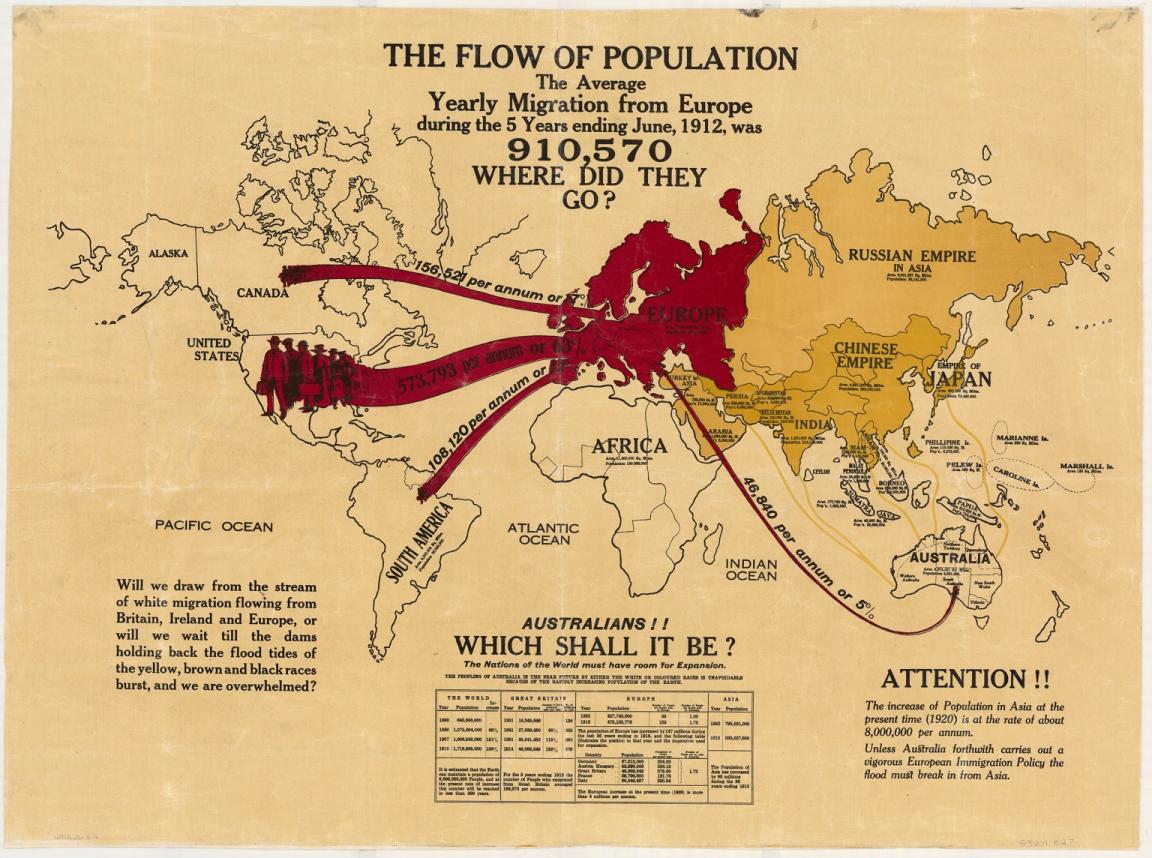
The flow of population, 1920, nla.gov.au/nla.obj-297463529
The flow of population, 1920, nla.gov.au/nla.obj-297463529
Activity 2: Understanding motivation
Using Trove, explore The Flow of PopulationWorld Map. Note with the students that there is offensive language used on the map which is no longer used today. To explore the motivation behind the ‘White Australia policy’, ask the following questions about the map:
- Would you call it a map or is it something else?
- According to the image, where are Europeans migrating to?
- Who might be wanting more Europeans to come to Australia?
- Why do you think a map like this might be created?
Modern advertising
Australia has been advertised as a top destination throughout history, but the way advertisements look has changed over the years.
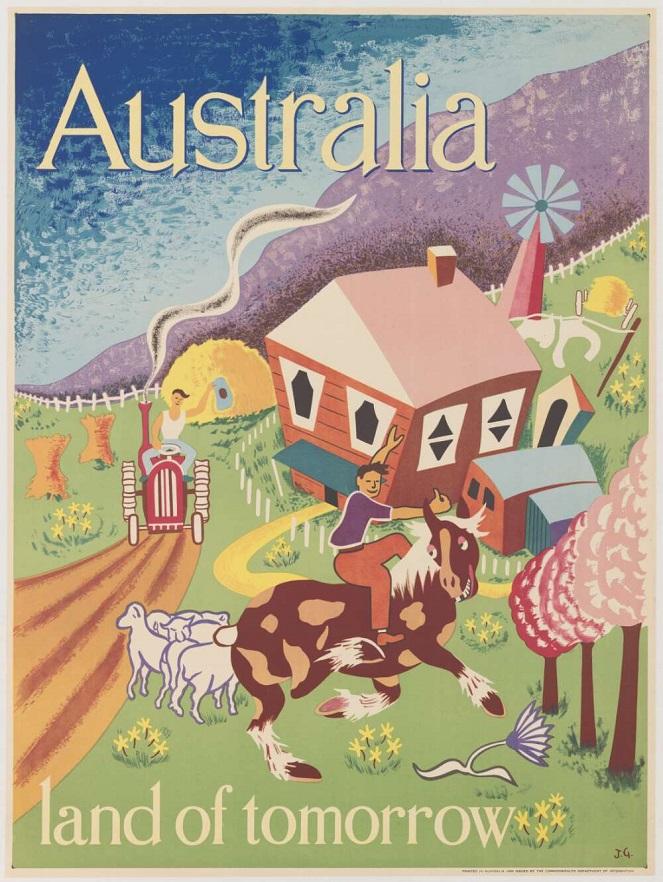
J. G & Australia. Department of Information, Australia land of tomorrow, 1950, nla.gov.au/nla.obj-137199963
J. G & Australia. Department of Information, Australia land of tomorrow, 1950, nla.gov.au/nla.obj-137199963
Activity 3: Design a poster
- Do advertisements look the same as they did in the early 1900s?
- Ask the students to design a poster convincing people to travel to Australia today as a migrant or tourist.
